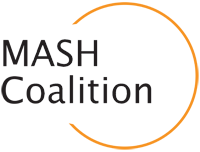Testimony for Randall Simmrin
AB 693 - Senate Committee on Energy, Utilities, and Communications
Testimony for Randall Simmrin On behalf of MASH COALITION
July 13, 2015
Good morning Chair Hueso and committee members. My name is Randall Simmrin and I am the Executive Director with Community Advancement Development Corporation and a Member of the MASH Coalition.
The MASH Coalition[1] is a group of 18 non-profit and for profit affordable housing organizations that have made commitments to install renewable energy systems on affordable housing properties and that have joined together in the MASH proceeding to support policies that provide greater access to solar within this underserved market. To date, organizations in the Coalition have installed over 12 megawatts (MW) another have an additional 28 MWs of planned installations.
I am here today on behalf of the MASH Coalition to strongly encourage you to support AB 693, which in our view provides a breakthrough for expending solar benefits to low-income renters.
1. AB 693 Closes a Gap in Current Solar Program
The growth in solar in California’s residential markets facilitated by the California Solar Initiative has largely bypassed low-income renters and disadvantaged communities in California. In California there are over 5 million households eligible for the CARE program and according to the 2013 needs assessment for the Energy Savings Assistance (ESA) and the California Alternate Rates for Energy (CARE) programs, 64 percent of CARE-eligible of low-income households reside in rental housing.[2]
To date, the MASH program has served less than 6,500 low-income renters. An analysis by the Center for American Progress[3] reported that only 4.2% of the solar installations under the California Solar Initiative (CSI) served households with incomes of less than $40,000 per year.
AB 693 would address this deficit by providing low-income renters access to the direct economic benefits delivered by solar systems and by extending the benefits of California’s solar vision to disadvantaged communities and underserved markets.
2. AB 693 Scales Solar in Underserved Markets
Current solar programs have not penetrated the affordable housing markets. We estimate that there are over 8,000 properties with nearly 1 million units serving households with incomes below 200 percent of the federal poverty level that could be reach be AB 693. AB 693 would install a combined generating capacity of at over 300 megawatts of solar in markets not adequately served by California’s solar programs and policies. AB 693 would reach over 200,000 low-income renters at approximately 2500 sites.
By contrast, in the 7 or 8 years MASH has been in place, we have reached only 300 properties and 6,500 low-income units. The reach of Sola CARE would be a game changer for low-income families in California.
3. AB 693 Tenant First Strategy Would Achieve Parity for Low Income Renter
Split incentives, requiring property owners to subsidize the costs of energy improvements that benefit tenants (but not the properties) have been a large barrier to scaling solar systems to serve tenants.
Generally, the margin available from net operating income at affordable housing properties is very thin, permitting enough to preserve the housing asset but not enough receipts to cover major investments like solar, or the funding gaps after solar rebates are factored in.
To reach tenant units with solar, members of the MASH Coalition have had to rely on other resources, such as the programs authorized under the American Recovery and Reinvestment Act of 2009, which are no longer available. We also rely on savings from common areas to cross-subsidize the costs of tenant systems, but theses savings are insufficient to cover most of the added costs. The Single Family Affordable Home program provides a deeper level of subsidies to install solar on homes owned by low-income households recognizing that low-income households cannot cover solar investment costs. In most cases, these systems were fully subsidized at nearly twice the level of the MASH program.
AB 693 would achieve parity for low-income renters by putting in place financial solutions to mitigate the barriers of providing solar access to low-income renters.
In closing, the MASH COALITION stands with the California Environmental Justice Alliance and other advocates of low-income households and communities in support of AB 693. We believe it is a critical step to finally get renewable energy into disadvantaged communities. For all these reasons, we strongly urge your Aye vote.
References/Sources
[1] The MASH Coalition includes the following companies: Affirmed Housing Group, Bayview Community Development Corporation, Chelsea Investment Corporation, Community Housing Works, Community Advancement Corporation, Core Builders, EAH Housing, Housing Authority of the County of Santa Barbara, Irvine Housing Opportunities LevyAffiliated, LINC Housing, Many Mansions, San Diego Youth Services, Standard Property Company, The Reliant Group, Urban Housing Communities, and VITUS Group
[2] Everygreen Economics, Needs Assessment for the Energy Savings Assistance and the California Alternate Rates for Energy Programs, Volume 1: Summary Report. Final Report December 16, 2013.
[3] Mari Hernandes, Solar Power to the People: he Rise of Rooftop Solar Among the Middle Class, October 21, 2013, Center for American Progress.
